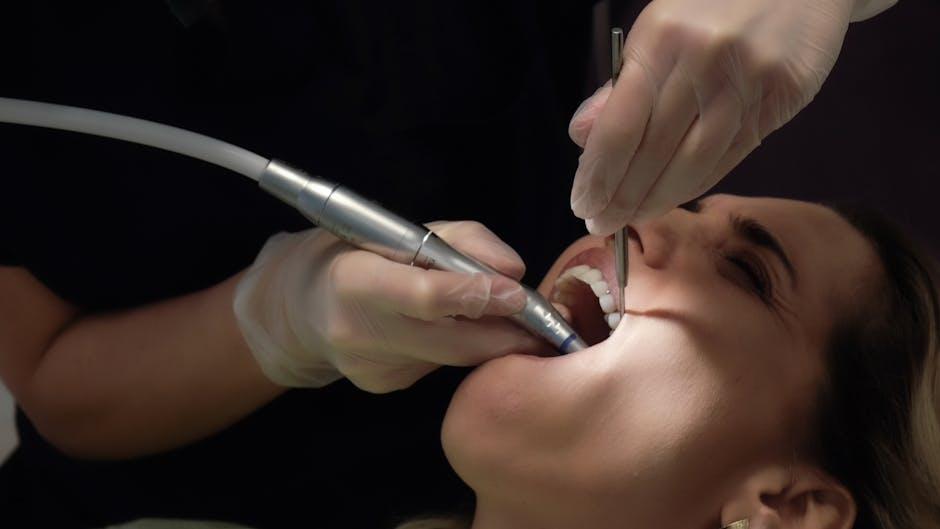
ADA Concerned About Dental Insurance Company’s Acquisition of Practices – Dentistry Today
In recent months, the American Dental Association (ADA) has voiced growing concerns regarding a major dental insurance company’s aggressive acquisition of dental practices across the United States. This developing trend has ignited important discussions about the potential impacts on patient care, dentist autonomy, and the future structure of dental practices nationwide. This article explores the nuances of this issue, outlining what it means for dentists, patients, and the broader dental community.
Introduction: What’s Happening in the Dental Industry?
The dental industry is undergoing transformative changes as corporate buyouts of private dental practices increase. One prominent dental insurance company is ramping up acquisitions, essentially buying out independently owned practices and incorporating them under its expansive umbrella. While on the surface this might suggest streamlined insurance and clinical processes, the ADA warns of potentially unfavorable consequences for dental professionals and the patients they serve.
Why Is the ADA Concerned About Dental Practice Acquisitions?
The American Dental Association’s concerns center on several key issues:
- Loss of Dentist Autonomy: When insurance companies own dental practices, dentists may face pressure to conform to cost-cutting measures that conflict with their clinical judgement.
- Impact on Quality of Care: Corporate ownership may prioritize profitability over patient-centric care, potentially reducing time spent on more complex treatments.
- Insurance Influence: The vertical integration of insurance and practice ownership could limit treatment options or steer patients toward specific care paths dictated by the insurer.
- Market Monopoly Concerns: Aggressive acquisitions risk creating monopolies or reducing competition in local markets, leading to higher costs and fewer choices.
Key Statement from the ADA
The ADA publicly stated that these acquisitions jeopardize the trusted relationship between dentists and patients, urging for regulations that protect independent dental practices from insurance company dominance.
What Does This Mean for Patients?
Patients could face several challenges if this trend continues unchecked. While some may experience more seamless insurance transactions, others might encounter:
- Reduced treatment options due to insurer-driven protocols
- Shorter dental visits focused on routine procedures
- Potential increase in out-of-pocket expenses where treatments are limited
- Less personalized care as dentist autonomy diminishes
Benefits & Practical Tips for Dentists Facing Corporate Acquisition Pressure
Potential Benefits of Corporate Partnerships
- Access to larger networks and patient pools
- Streamlined administrative and billing processes
- Financial stability and investment in advanced technology
Practical Tips to Navigate This Landscape
- Understand your contracts thoroughly. Seek legal advice before entering partnerships or sale agreements.
- Keep patient care at the forefront. Always advocate for treatment plans that prioritize patient health over profit.
- Engage with professional organizations. The ADA and local dental societies provide valuable resources and support.
- Consider joining or forming dental service organizations (DSOs) carefully. Some DSOs offer autonomy while managing administrative tasks.
- Communicate transparently with your patients. Keep patients informed about changes to practice ownership or policies that may affect their care.
Case Study: Independent Practice vs. Insurance-Owned Practice
| Practice Type | Dentist Autonomy | Patient Care Focus | Administrative Burden |
|---|---|---|---|
| Independent Practice | High | Personalized and flexible | High, dentist-led |
| Insurance-Owned Practice | Limited | Standardized, cost-driven | Low, centralized management |
Firsthand Experience: A Dentist’s Perspective
Dr. Emily Walcott, a family dentist in Ohio, shares her perspective:
“When our practice was approached by a dental insurance conglomerate, I was initially intrigued by the promise of reduced administrative work. However, I quickly realized that clinical decisions were increasingly being influenced by insurance quotas and cost concerns. My strongest advice to colleagues is to weigh the long-term effects on patient relationships and care quality before considering such partnerships.”
Looking Forward: The ADA’s Role and Industry Outlook
The ADA continues to monitor these acquisitions closely, advocating for policies that:
- Preserve professional independence
- Ensure transparent business practices
- Maintain high standards of patient care
Industry experts anticipate that regulatory agencies may soon impose stricter guidelines to curb potential monopolistic practices, ensuring a balanced dental care marketplace accessible to all.
Conclusion: Protecting the Future of Dentistry
The acquisition of dental practices by dental insurance companies presents both opportunities and significant risks. As the ADA raises important concerns regarding these mergers, it is critical for dentists to stay informed and proactive. Preserving clinical autonomy and patient-focused care should remain priorities to ensure that dental professionals continue to provide trusted, high-quality services. Patients and practitioners alike should engage in open conversations about the evolving landscape to protect the integrity of dental care in the United States.
Stay informed, advocate wisely, and prioritize patient health above all.


